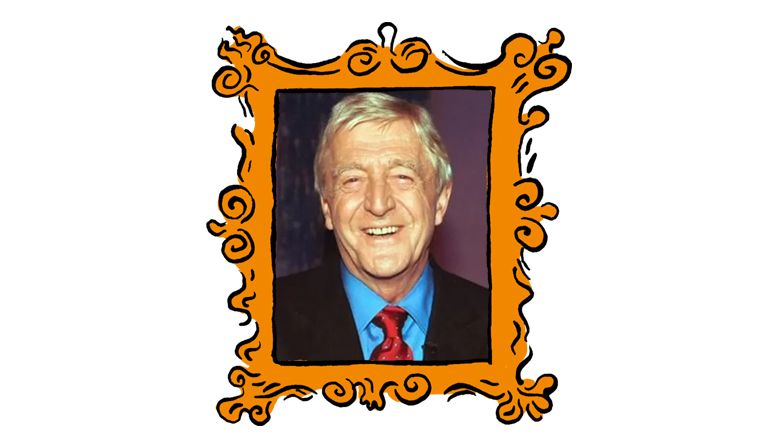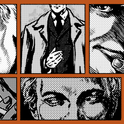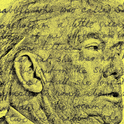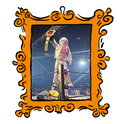That recent week when Michael Parkinson died, aged 88, and Melvyn Bragg announced his intention to step down from the South Bank Show was a week in which I wondered whether my rose-tinted glasses were turning rosier. Was everything truly better back in the day?
Because, to those who grew up during the 1970s, 1980s and 1990s, Parkinson’s and Bragg’s programmes demonstrated that culture did indeed have a place on mainstream television—a given back then that today feels like an impossible dream.
The manner in which Parkinson’s death was announced was itself instructive. The 1990s revival of his chat show, which was definitely more showbiz, was privileged in the coverage. That revival was Posh and Becks, Madonna and Tom Cruise—and, fair enough, that’s what people wanted. But that Parkinson had also welcomed WH Auden, Orson Welles, Duke Ellington, John Betjeman, Peter Cook and Edna O’Brien onto his famous black chairs during the 1970s was rather obscured in the obituaries and news reports.
Parkinson’s cultural purview, it’s true, came with limits. A lover of jazz, he was instinctively more Jamie Cullum and Michael Bublé than Miles Davis or Ornette Coleman. No, he never shot the breeze with Karlheinz Stockhausen, discussed the fabric of painting with Jasper Johns or whether fiction was indeed lying with BS Johnson. There was no Barbara Hepworth, Martin Amis, nor Werner Herzog.
But credit where it’s due for how he carved out a space on primetime television for lengthy interviews with major cultural icons, who—it should be added—were featured simply because they had plenty to say. Not plugging, not promoting, not polishing their lucrative brand.
The lesson was: if you keep art in the mainstream, the surrounding culture is nourished and can be turned to something more than just the relentless dance of publicity. Parky’s knack of doing an in-depth interview with Anthony Burgess and then welcoming Dame Edna was the televisual equivalent of eating your greens before digging into the buttery mashed potato below; the very definition of entertaining, informing public service broadcasting. Arts programmes such as The Late Show, Omnibus and Arena were handed a context in which they could thrive.
As a warning of what happens when arts programmes vanish from the schedules, ITV’s axing of the South Bank Show in 2010—following its political sister programme, World In Action, a decade earlier—was the same moment the channel slumped towards cultural infantilism, to Simon Cowell and Piers Morgan and, ultimately, Holly Willoughby asking, “Firstly, are you okay?” (Yes, ITV picked up Parkinson after a spat with the BBC, but it became a culture-free zone.)
One suspects Melvyn Bragg needs no reminding of the worth of his legacy. Sustaining the South Bank Show over 30 years on commercial television, then buying the rights before relaunching on Sky Arts, takes both chutzpah and talent. The first series, in 1978, set out the stall: Georges Simenon, David Hockney, Herbert von Karajan and Frank Auerbach, balanced by films on Ken Dodd, Paul McCartney and Carl Perkins. That in 2006 Bragg was still able to serve up a film on Steve Reich, on ITV, seems like a miracle these days.
Have my rose-tinted glasses indeed turned rosier? Currently, I’m midway through watching a three-part documentary about Wayne Shorter on Amazon Prime, and very good it is too. John Bridcut’s superb film on Michael Tippett appeared on BBC Two over the summer, not a BBC Four graveyard slot. Sophie Deveson’s 2021 BBC documentary on Bridget Riley is one of the great arts programmes of our time. There is quality material around; look and you will find.
With Parkinson and the South Bank Show on primetime, though, nobody needed to look especially hard. Therein lies the difference. Culture was woven through the week, with trails for South Bank Show episodes about abstract expressionism, or Francis Bacon, wrapped around episodes of Coronation Street. Come for Hilda Ogden, stay for JG Ballard.
Of course, nowadays, people can actively seek out documentaries about Tracey Emin or György Ligeti (or whoever) online. YouTube has more cultural content—much of it ripped from old TV broadcasts—than any one person could consume in a lifetime.
But shouldn’t public service broadcasters also want to catch people who might stumble across arts programming without realising? My early teenage years were turned on their head by chance encounters with: documentaries about Charlie Chaplin; a programme in which Humphrey Lyttelton explored the myth of lost New Orleans cornet player Buddy Bolden; and by Leonard Bernstein conducting West Side Story.
These encounters felt like an honest acknowledgment: culture is magnificently messy, boundaries between high and low art bleeding into each other like they just don’t care. Having culture sit proudly within mainstream programming set the tone, whereas culture on television today is too often apologised for, considered something of an embarrassment, even.
In fact, BBC News seems to have given up altogether. When Tippett died in 1998, Newsnight looked into his work in depth. When Harrison Birtwistle died last year, nothing.












